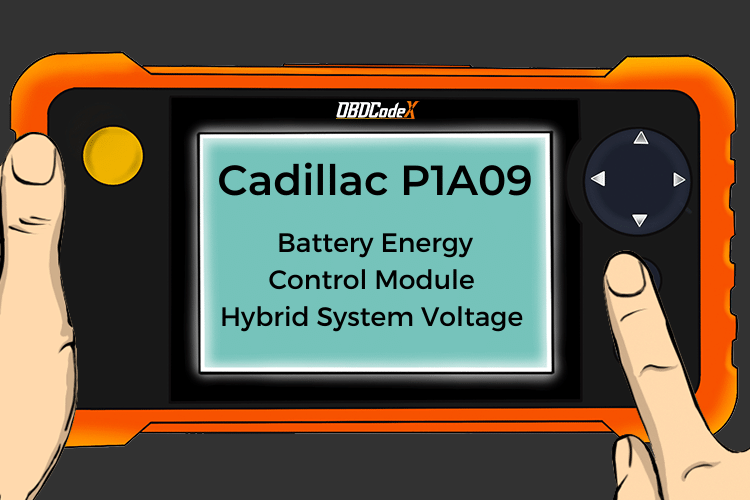P202F: Reductant/Regeneration Supply Control Circuit Range/Performance
Is your scanner showing P202F?
No worries. We'll show you what it means and how to deal with it.
P202F: Reductant/Regeneration Supply Control Circuit Range/Performance
OVERVIEWWhat Does The P202F Code Mean?
A stored code P202F means that the powertrain control module (PCM) has detected an insufficient degree of activity in the control circuit for the reductant/regeneration supply pump.
The catalyst system is responsible for reduction of (basically) all exhaust emissions although certain applications are also equipped with a NOx trap.
Exhaust gas recirculation (EGR) systems go another step further in the reduction of NOx. Nevertheless, today’s larger and more powerful diesel engines cannot meet strict federal (U.S.) emission standards with the EGR, diesel particulate filter/catalytic converter, and NOx trap alone. It was for this reason that selective catalytic reduction (SCR) systems were invented.
SCR systems inject a reductant compound or a diesel exhaust fluid (DEF) into the exhaust in front of the diesel particulate filter, NOx trap, and/or the catalytic converter via the reductant injection valve (solenoid). The precisely timed DEF injection elevates the temperature of the filtration element and allows it to perform more efficiently. It enhances filtration element longevity and allows fewer harmful exhaust emissions to be released into the atmosphere. The entire SCR system is monitored and controlled by either the PCM or a stand-alone controller (which interacts with the PCM).
Either way, the controller monitors the O2, NOx, and exhaust temperature sensors (as well as other inputs) to determine the appropriate time for DEF (reductant) injection. Precise DEF injection is necessary to maintain exhaust temperature within acceptable parameters and optimize pollutant filtration.
The reductant/regeneration supply pump is used to pressurize the DEF in the liquid reductant system for use, when required. Supply pump voltage is monitored by the PCM for consistent fluctuation and load percentage. The PCM also monitors one or more pressure sensors in the reductant supply system to determine if there is a leak in the system.
If the PCM detects a degree of voltage variation on the reductant/regeneration supply circuit that is not within allowable parameters, a code P202F will be stored and a malfunction indicator lamp (MIL) may be illuminated. Multiple ignition cycles – with a failure – may be required for MIL illumination.
What Are The Symptoms Of The P202F Code?
Symptoms of a P202F trouble code may include:
- Reduction in fuel efficiency
- Excessive black smoke from vehicle exhaust
- Diminished engine performance
- Other SCR related codes
What Are The Potential Causes Of The P202F Code?
Causes for this code may include:
- Defective reductant supply pump (overload)
- Open or shorted circuits in the reductant supply control
- Bad SCR controller/PCM or programming error
How Serious Is This P202F Code?
A stored code P202F should be considered severe and addressed as quickly as possible. The SCR system could be disabled because of it. Catalyst damage could result if the conditions which contributed to the code being stored are not rectified in a timely fashion.
How Can You Fix The P202F Code?
A diagnostic scanner, a digital volt/ohmmeter (DVOM), and a source of vehicle specific diagnostic information will be required to diagnose a code P202F.
You may use your source of vehicle information to locate a technical service bulletin (TSB) that matches the vehicle year, make, and model; as well as the engine size, code/s stored, and symptoms exhibited. If you find one, it could yield helpful diagnostic information.
Use the scanner (connected to the vehicle diagnostic connector) to retrieve all stored codes and pertinent freeze frame data. It is a good idea to write this information down before clearing the codes then test-drive the vehicle until the PCM either enters readiness mode or the code is reset.
If the PCM enters readiness mode at this time, the code is intermittent and may be much more difficult to diagnose. If this is the case, the conditions which contributed to the code being stored may need to worsen before an accurate diagnosis can be made.
If the code is immediately reset, the next step of your diagnosis will require that you search your vehicle information source for diagnostic flow-charts, connector pin-out charts, connector face views, and component testing procedures/specifications.
Step 1
Use the DVOM to test the reductant tank supply pump according to manufacturer specifications. Components which do not test within maximum allowable parameters should be considered defective.
Step 2
Use your source of vehicle diagnostic information and the DVOM to test reductant supply pump voltage (usually battery voltage) with the pump activated. If current conditions won’t permit activation, use the scanner to manually activate the pump.
Step 3
If the reductant supply pump is functional, use the DVOM to test input and output signal circuits from the fuse panel, PCM, and ignition switch. Disconnect all controllers prior to using the DVOM for testing.
Note: Reductant supply pump control codes are frequently attributed to supply pumps which draw excessive voltage
Recommended Parts
Below are some recommended auto parts to help you address the trouble code affecting your vehicle and get it running smoothly again:
>>> Twippo 372Pcs Waterproof Wire Connectors Kit
>>> SCR System
>>> ECU
>>> Autel Scanner MaxiCOM MK808S
>>> KAIWEETS Digital Multimeter
Note: During the purchasing process, please check carefully whether the part you want to buy fits your car!
Reference Sources
P202F Reductant/Regeneration Supply Control Circuit Range/Performance, OBD-Codes.




